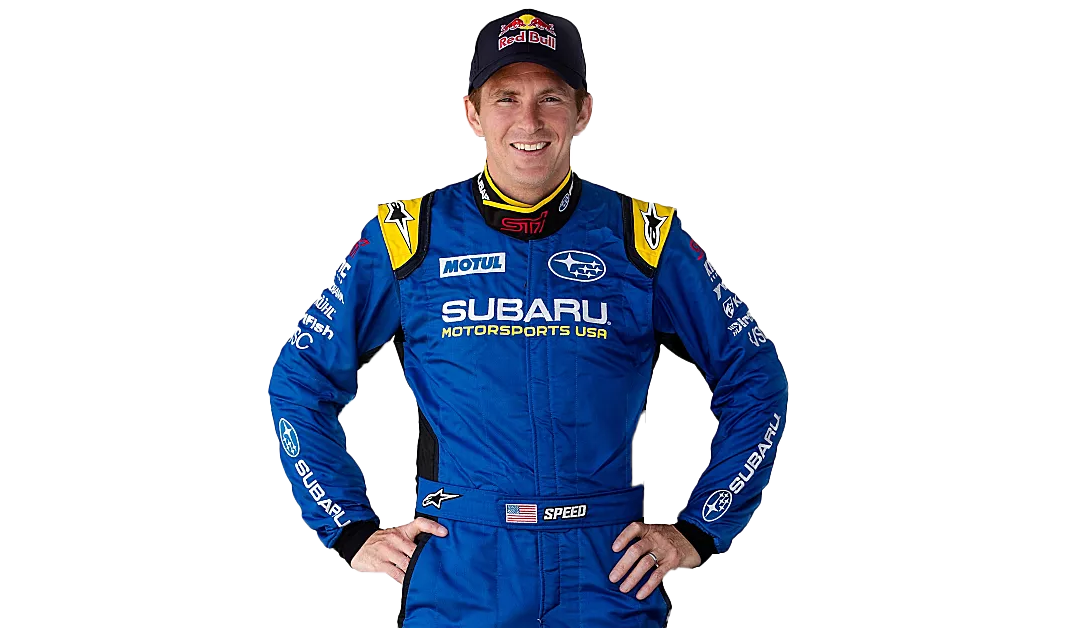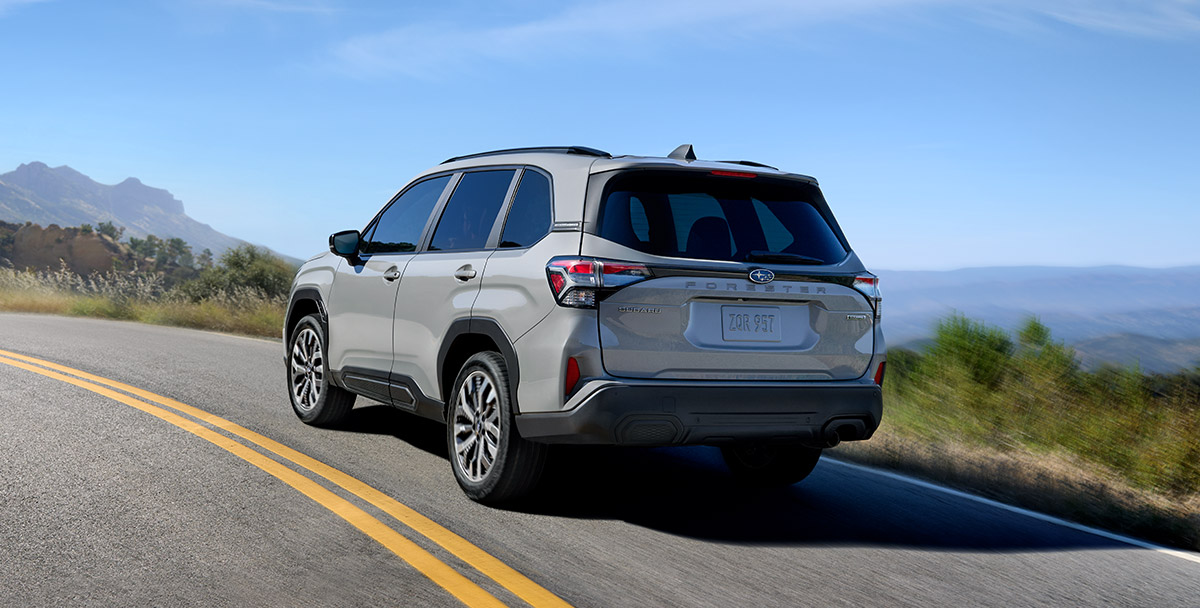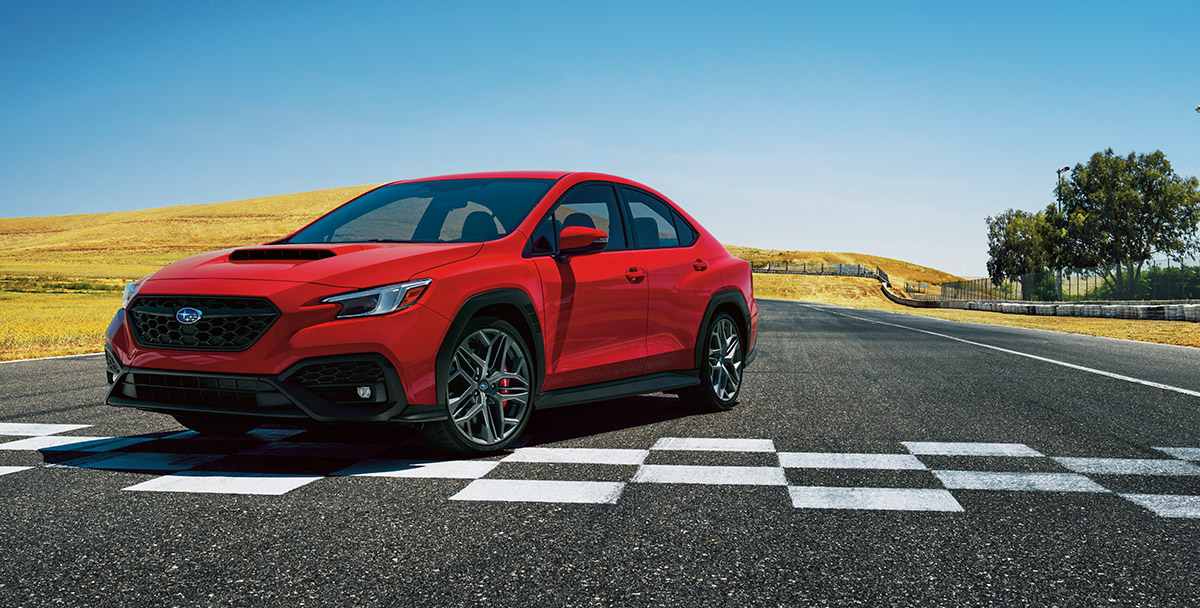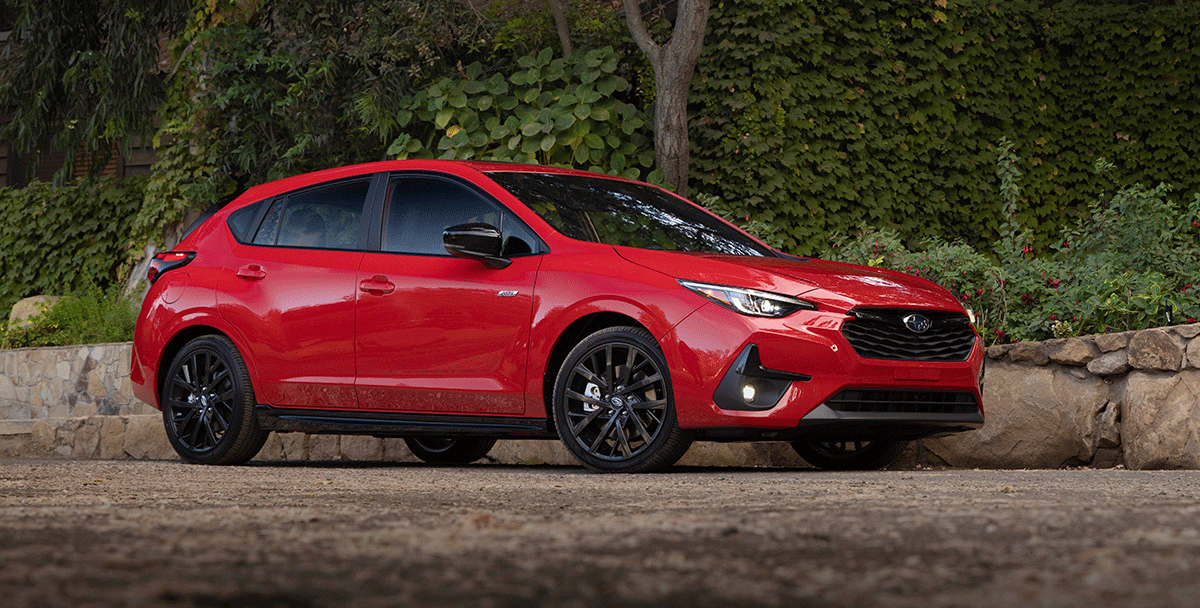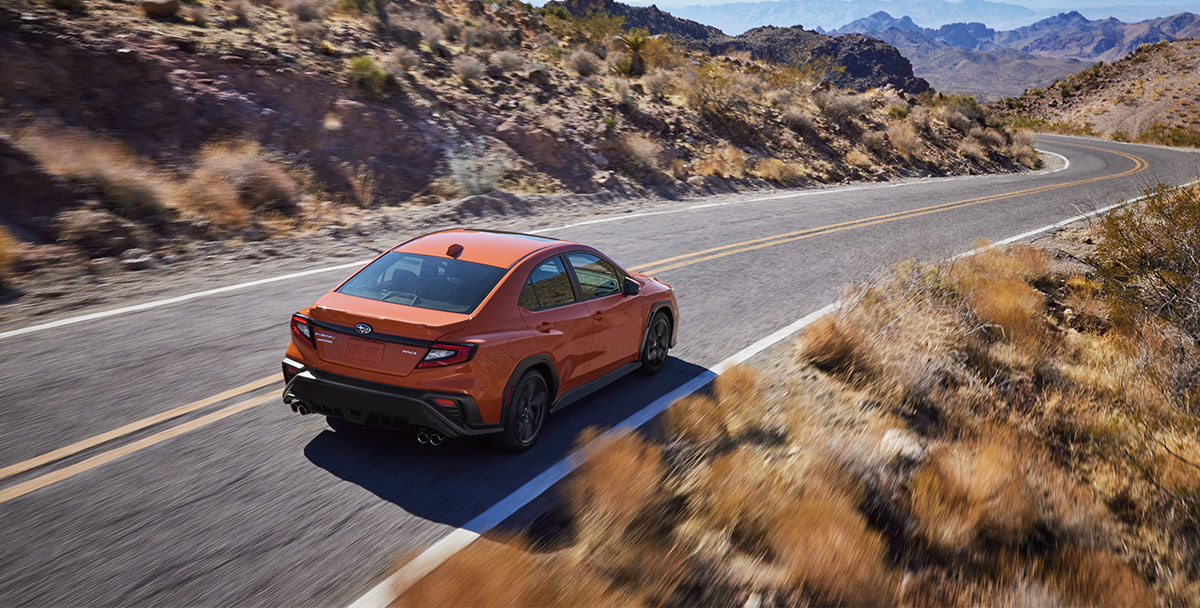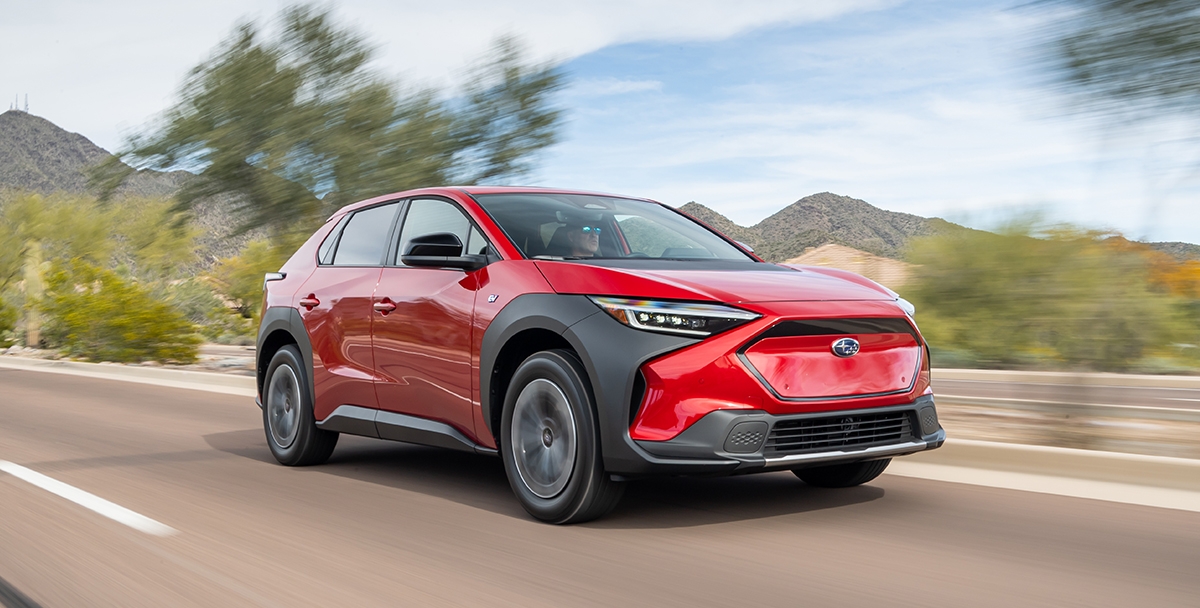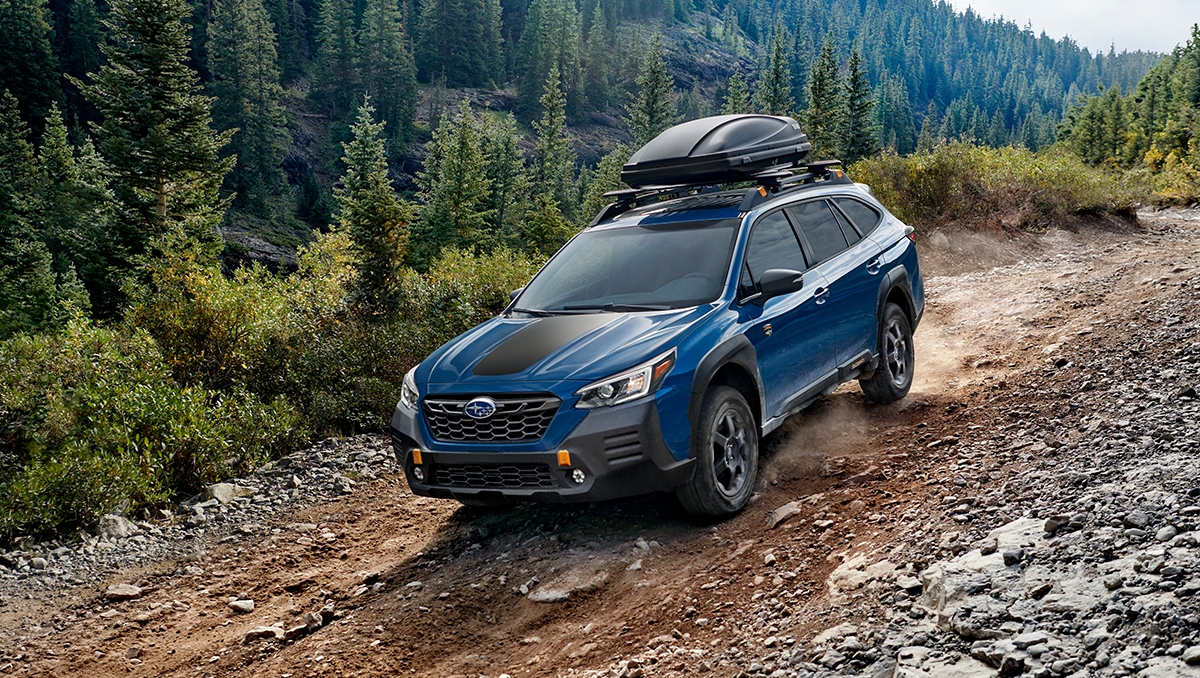Last year brought the Subaru WRX TR, or “Tuner Ready,” the hot setup for WRX owners who were interested in a vehicle that leans heavily toward track days1 rather than the daily commute.
For the 2025 model year, the WRX tS replaces the TR trim with one that’s even more capable as a track car. But the tS also provides a surprising amount of refinement, thanks to the selectable Drive Modes, previously available only on the top-of-the-line Subaru WRX GT with standard automatic Subaru Performance Transmission.
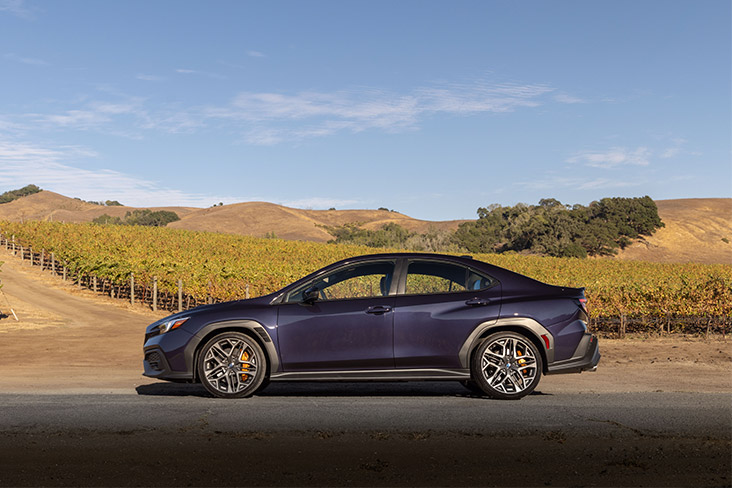
Subaru chose Napa, California, to debut the WRX tS to the media, and Subaru Drive was along to sample the new trim level. It’s an ideal location to experience the car, with miles of twisting, turning roads through the hills of wine country and Sonoma Raceway®, a 2.52-mile road course with a dozen turns.
The track – which opened in 1968 and has hosted events from NASCAR® to IndyCar® – offers 160 feet of elevation change between its lowest and highest points, with a long hill leading up to Turn 2, a great spot to learn how to utilize the car’s turbocharged Boxer Engine to its fullest capabilities.
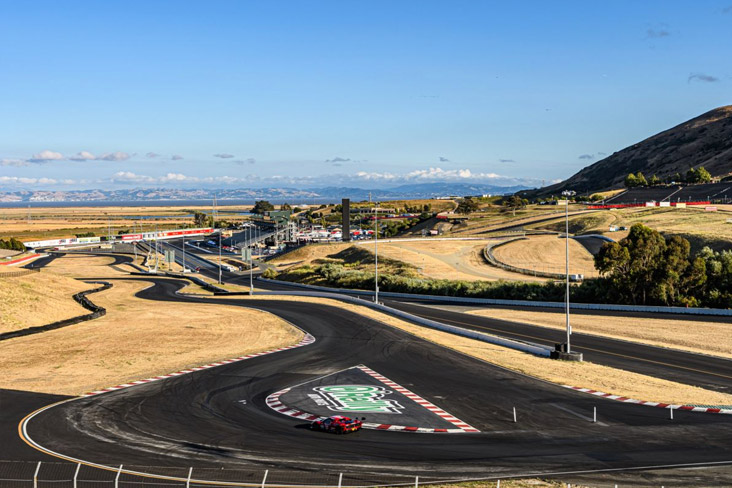
Chris Charles, Subaru of America Carline Planning Manager, says that in every iteration, the WRX is a car which ticks a lot of boxes you wouldn’t necessarily think a performance vehicle could.
“Versatility matters to these customers,” Charles says. “They’re more likely than average Subaru owners to go camping and own pets, and WRX customers are also more likely to have children living at home than the average Subaru owner. So, this really speaks to the versatility of the WRX with practical back seats [plus] ample trunk space for families and their gear.”
That all carries over to the WRX tS. The rear seat is still a feature, and the cargo volume remains unchanged. By keeping all of the things that make the WRX a success, the biggest upgrade to the Subaru WRX tS is underneath.
Subaru WRX tS: Big Brembo®2 Brakes
Including Brembo brakes with the standard features list used to be a big deal, but these days it almost feels like “air conditioning” – they’ve become the industry standard for performance braking. Brembo reportedly bench-tests its calipers with over 300,000 1G stops for performance, strength and durability.
But all brakes are not created equal, and Brembo representatives were on-site to highlight just how unique the WRX tS model’s brakes are.
The vented and cross-drilled brake rotors are massive at 13.4 inches up front and 12.8 inches in the rear. The rotors are squeezed by six-piston calipers up front and two-piston calipers at the rear in signature gold color. “Those six-piston front calipers are a segment exclusive for this car,” says Charles.
“Some of our competitors use a sliding rear caliper, unlike the Brembo monobloc unit that the WRX tS has,” he adds. A monobloc brake caliper is machined out of a single piece of aluminum for strength and better braking performance, while sliding calipers use pins or sliders to equalize brake pressure on both sides of the rotor and are more focused on improving brake pad life than braking performance.
The brake upgrade “allows for larger swept area, maximum initial braking torque, and it has better fade resistance under repeated hard use,” says Charles.
Through the undulating hills of Wine Country and in the braking zones at Sonoma Raceway, those brakes had plenty of opportunity to prove their mettle. I got in a few hot laps with four-time rallycross champion Scott Speed (see sidebar) and noted how consistent the brakes are. “And that’s after doing this all day,” Speed says.
By the end of his shift in the driver’s seat, the brake pads were hot enough to smoke, but they didn’t appear to lack in performance from the first to the last run.
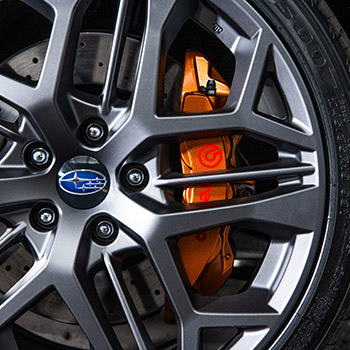
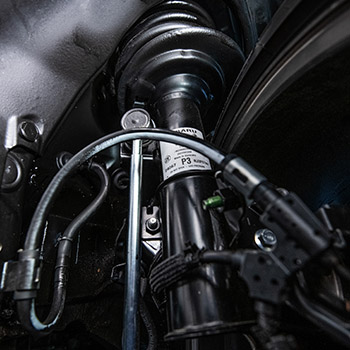
2025 WRX tS: Suspension Upgrades
The WRX TR has suspension improvements to brag about, but the WRX tS goes even further. The abbreviation “tS” stands for “tuned by STI,” Subaru Tecnica International, which has been in the business of wringing performance out of Subaru products since 1988. By 1989, STI had set an over 62,000-mile FIA speed endurance record of 138.780 mph nonstop (except for fuel/oil refills and tire/driver changes) for 18 days in the month of January. That record stands today.
The basic layout of the suspension is the same as any other WRX: Front MacPherson struts with a multi-link rear, along with front and rear anti-roll bars. The dampers are electronically controlled, adaptive and adjustable, and tuned by STI for both track1 and road performance.
A similar setup is in use in the WRX GT, but the tuning is unique to the tS and a significant step up from last year’s WRX TR. Pitch (the forward and rearward angle on braking or acceleration) and roll (the sideways leaning of the body under extreme cornering) are both improved from the TR, according to Charles.
The other upgrade from the TR is two types of performance adjustability. The damping force has three available modes: Comfort, Normal and Sport.
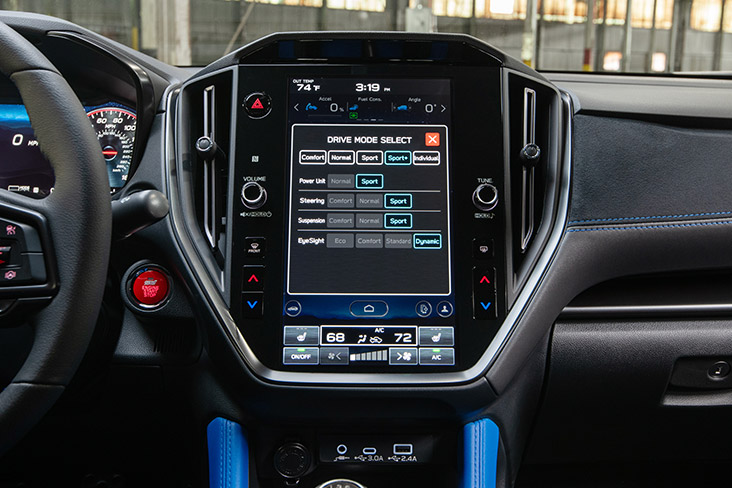
The Comfort setting results in a surprisingly plush ride, especially given the satin gray 19-inch wheels and 245/35 R19 Bridgestone® Potenza™ S007 tires with very little sidewall. On the road, Comfort provides more damping force than that similar mode on the GT, but it’s never harsh. Normal is your jack-of-all-trades mode, providing a good compromise between Comfort and the much stiffer Sport mode.
The second type of adjustability is the Drive Mode Select. That allows the driver to select four different settings for engine performance, steering, suspension and EyeSight® Driver Assist Technology.3 The WRX tS has both a manual transmission and EyeSight, which provides adaptive cruise control functions along with a Pre-Collision Braking System,4 Lane Departure and Sway Warning, and Lead Vehicle Start Alert. By selecting Sport+ mode, the adaptive cruise control will accelerate more quickly as the vehicle that it’s following pulls away in traffic.
Individual mode allows an array of driver-selectable performance combinations. Are you more interested in lighter steering with rock-hard dampers and less aggressive EyeSight3 performance? It’s available with a few presses on the 11.6-inch touchscreen.
Drive Mode Select was previously only available on the WRX GT.
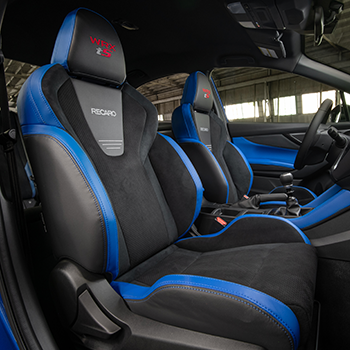
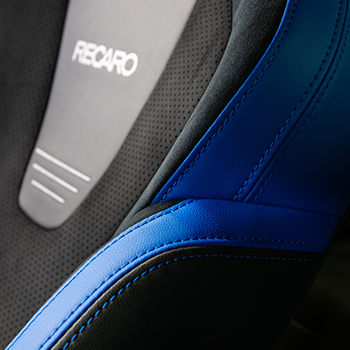
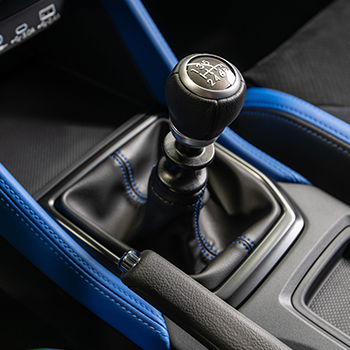
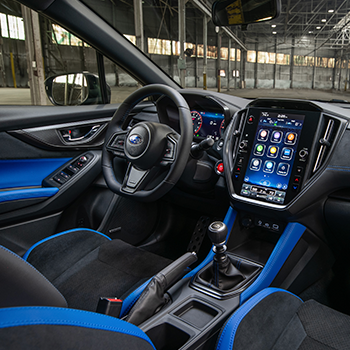
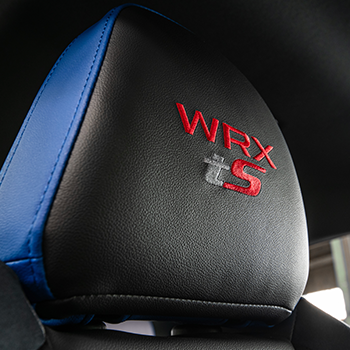
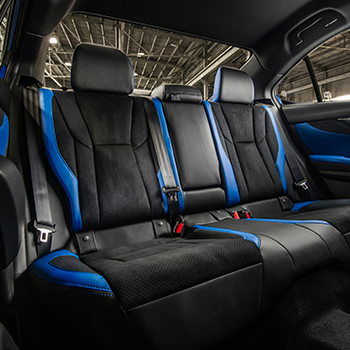
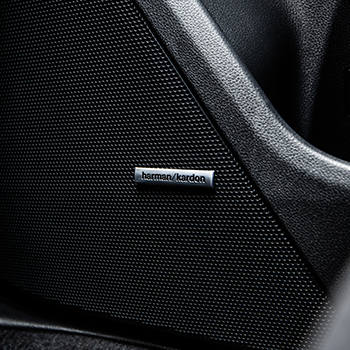
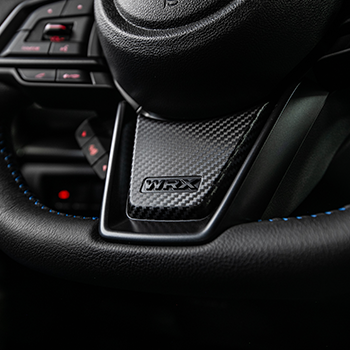
2025 WRX tS: Interior Upgrades
There are several significant improvements to the 2025 WRX tS interior over the TR it replaces. The WRX tS provides increased support for the driver and front passenger with Recaro®5 performance-design front seats.
The seat back has a Y-shaped design to securely support the shoulder blades and maintain a performance-focused driving position. The grippy black Ultrasuede®6 upholstery aids in keeping the driver and front passenger in place, something I definitely appreciated when Scott Speed was drifting us through the corners.
Aesthetically, the black seats are accented with World Rally Blue on the seat edges and a WRX tS logo embossed in red on the front headrests. The driver’s seat has eight-way power adjustments while the passenger seat has four-way manual adjustments.
Blue contrast stitching pops on the steering wheel, dashboard, and shifter boot and the red ignition start button features the STI logo. Like the TR, the tS deletes the moonroof that comes standard with the WRX in favor of better body stiffness and slightly greater headroom for helmeted drivers.
The all-new 12.3-inch digital gauge cluster provides improved legibility and also has several driver-selectable configurations that prioritize map display and route guidance.
The WRX tS also includes the latest version of the SUBARU STARLINK® 11.6-inch Multimedia Plus system, with a high-definition touchscreen for multimedia, climate control, and vehicle configuration settings. Physical buttons also duplicate the temperature buttons for climate control.
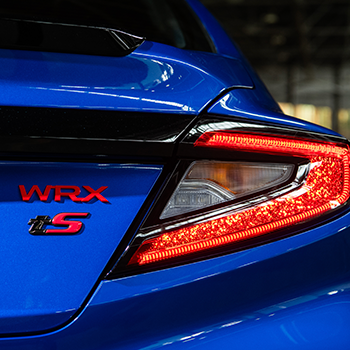
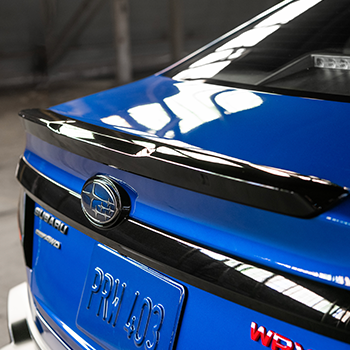
2025 WRX tS: Exterior Upgrades
Subtle exterior differences distinguish the WRX from the WRX tS. The immediate callouts are the Crystal Black Silica exterior mirrors, shark fin antenna and rear spoiler. The rear deck lid now wears the tS badge, and rear taillights glow with a look inspired by volcanic magma.
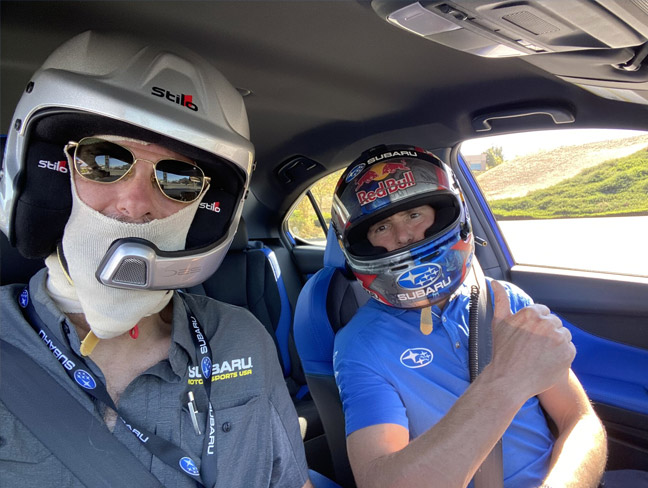
2025 WRX tS: Driving Impressions
Like the WRX, the WRX tS is equipped with a 271-hp 2.4-liter turbocharged SUBARU BOXER® engine. The tS is only available with the six-speed manual transmission. Charles notes that a staggering 83% of WRX customers select a manual transmission.
The turbocharged Boxer Engine rewards keeping the revs between 2,000 and 5,200 rpm, where the torque curve is at its peak. After my laps with Scott Speed, I went at it on the track at Sonoma Raceway myself. With the track’s dozen corners and short straights, I was lucky to find fifth gear, mostly keeping the gear selector between second and fourth to maximize torque.
Speed urged me to feel how well engineered the chassis is for a vehicle with all-wheel drive. “It’s hard to set up the chassis on an all-wheel drive vehicle so that it doesn’t understeer in every corner,” he says.
Understeer is the tendency for the front end to wash out under hard cornering, pushing to the outside of the corner. In fast cornering, the tS feels neutral and flat, with neither that sensation of understeer nor any oversteer (when the back end of the car steps out sideways).
As I recognized during the laps with Speed, the braking is exceptional on the WRX tS. He got on the Brembo2 brakes so hard at one point that I was suspended by nothing but the seat belt. Subaru had us split into two groups, so these cars were on the track more or less all day except for a break at lunch. At no time did I feel like the brakes had faded or lost any performance.
There are customers who are interested in a WRX for its sporty feel and ability to fit a small family and their gear. But for the performance oriented – customers who want to spend as many days as possible squeezing ever faster laps out of their car1 – the WRX tS is the ride.
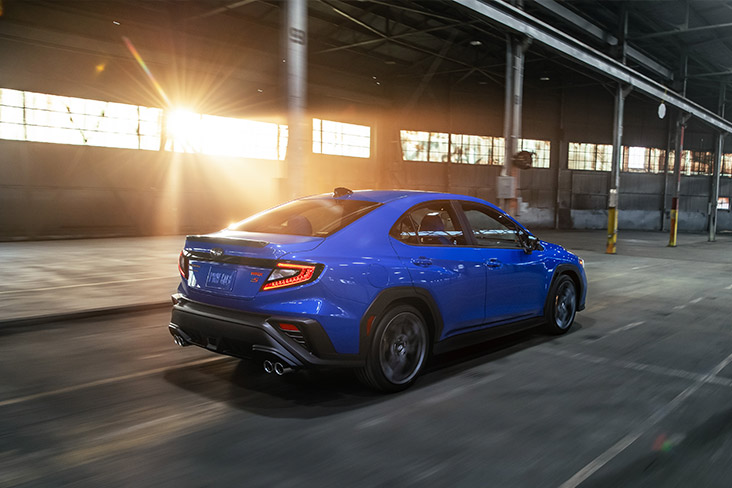
1 Racing vehicles shown are driven by professionals on closed courses. Do not attempt. All Subaru vehicles sold by Subaru of America are designed and built for normal driving conditions. The Subaru Limited Warranty, as well as the Subaru Added Security® program, may exclude damage or failure resulting from modifications or participation in competition or racing events. See the Subaru Warranty and Maintenance booklet for further details. 2 Brembo® is a registered trademark of Freni Brembo, S.p.A. 3 EyeSight is a driver-assist system that may not operate optimally under all driving conditions. The driver is always responsible for safe and attentive driving. System effectiveness depends on many factors, such as vehicle maintenance, weather, and road conditions. See Owner’s Manual for complete details on system operation and limitations. 4 EyeSight is a driver-assist system that may not operate optimally under all driving conditions. The Pre-Collision Braking System is designed to provide automatic braking that either prevents a collision or reduces the severity of a frontal impact. The driver is always responsible for safe and attentive driving. System effectiveness depends on many factors, such as vehicle maintenance, weather, and road conditions. See Owner’s Manual for complete details on system operation and limitations. 5 Recaro® is a registered trademark of RECARO Holding GmbH LLC. 6 Ultrasuede® is a registered trademark of Toray Industries, Inc.
